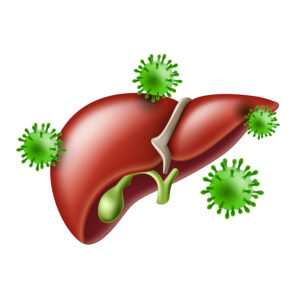Nowadays hepatitis C can be cured, but in the past it used to lead to cirrhosis of the liver and liver cancer. Recently there was a review article about hepatitis C in the journal Medical News Today.
The cause of hepatitis C is a virus that belongs to the Hepacivirus group of viruses. The previous name for it in the past was non-A, non-B hepatitis. In 1989 researchers at the Chiron Corporation detected the hepatitis C virus (HCV).
Hepatitis C blood test
In 1991 a hepatitis C virus blood test was developed. Today about 58 million people worldwide carry the virus and could transmit the virus to HCV negative persons. According to the WHO in 2019 290,000 people died from hepatitis C. Transmission of HCV often occurs in people injecting drugs with non-sterile equipment. 6% of infants born to HCV positive mothers get hepatitis C. HCV transmission is uncommon among heterosexual partners, but common in men who have sex with men. Prostitutes are frequently carriers of HCV.
Sharing personal items
When people share personal items such as glucose monitors, razors, nail clippers or toothbrushes, transmission of HCV is very likely. This can occur even when you come in contact with only minute amounts of blood not visible to the eye. Let’s assume a person with hepatitis C virus infection falls and scrapes the skin. The health care giver who attends to the wounds can accidentally get a hepatitis C infection as well.
Treatment of hepatitis C
In the past a combination of ribavirin and interferon led to about 50% response rates. But this combination treatment had a lot of side effects. In the meantime, the newer direct-acting antiviral drugs (DAA) are the treatment of choice. Within 12-24 weeks DAA drugs cure most hepatitis C patients with negligible side effects. Mortality rates also have significantly improved with these drugs.
Diffuse symptoms from hepatitis C
Hepatitis C can cause a variety of symptoms like yellow skin or eyes, lack of appetite, vomiting, stomach pain and fever. In addition, people report light-colored stools, dark urine, joint pains and a profound tiredness. Physicians have done brain wave studies and MRIs of the brain. They found that it is the hepatitis C virus that causes lack of energy and sleepiness. These symptoms all disappear with DAA treatment.
Conclusion
As more people carry the virus, hepatitis C is an infectious disease, which needs watching. Luckily, the new direct-acting antiviral drugs (DAA) are very effective in treating hepatitis C. But the patient needs to complete the full therapeutic cycle of between 12 and 24 weeks. At that time the blood test is negative for hepatitis C. Unfortunately, in many parts of the word this treatment schedule is not readily available. Without treatment of hepatitis C the chronic liver infection can cause cirrhosis of the liver. Many cases of cirrhosis of the liver can develop further to liver cancer with a high mortality rate.







